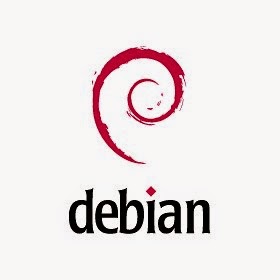The steps in Part 3 didn't work for me because of my WiFi dongle (Buffalo WLI-UC-GNM2). If it worked for you, then fine, you can skip this part.
What was the problem?
After completing Part 3, I inserted the micro SD card in the Pi and turned it on. After few seconds, I could see this message:Wait 8 seconds for Network Interface to come upAnd after that a message saying it was impossible to reach the server.
For some person, the solution was to change the power supply (USB cable) for a better one.
But in my case, the problem was the WiFi dongle!
How to solve it?
Here you have 2 cases, please choose:
1) You can't connect the Pi to your router with a cable
2) You can connect the Pi to your router with a cable
1) You can't connect the Pi to your router with a cable
You can't use the installer. Instead, you have to download the Standalone image.
You also need to download usbit.
- extract the files somewhere on your machine
- insert your memory card in your computer
- open usbit
- select your memory card
- click on restore
- select the image sd.img
Wait a little bit and that's it! You have a working copy of Raspbmc! But it's not end of our journey!
2) You can connect the Pi to your router with a cable
Same thing as in Part 3, except in the network management popup, don't select Wireless and set the correct values to connect to your router.
Either you chose 1 or 2, here is what you should do now.
Insert your micro SD card in the PI (be careful in which direction!) and plug your Pi!
After a while, you will see XBMC. First, we will disable CEC Adapter, otherwise we won't be able to run the terminal. CEC adapter controls your TV. If you keep it enable, when you exit Raspbmc, it will turn off your TV. And when you turn on your TV, it will restart your Pi. You can re-enable it later.
- go to Settings
- go to System
- go to Input Devices
- go to Peripherals
- open CEC Adapter
- uncheck the box Enabled
- click OK
- go back to the home screen (press Esc key)
- click the standby icon at the bottom-left
- select Exit
- at the blue splash screen which says Press ESC for command line, press the Esc key
- enter username pi
- enter password raspberry
All Set up now! Thanks for using Raspbmc
WiFi dongle setup
Now let's find out why we can't use our WiFi dongle.Let's check which chipset the Buffalo WLI-UC-GNM2 is using. Type the command:
lsusb
And the result is:
Bus 001 Device 004: ID 0411:01ee BUFFALO INC. (formerly MelCo., Inc.) WLI-UC-GNM2 Wireless LAN Adapter [Ralink RT3070]
Now open this page: WiFi
You can see a list of chipsets and if they are directly compatible with Raspbmc or not.
If you look at the WiFi page, you can see RT3070 is not compatible by default. You have to update the firmware. Fortunately there is a help page rt2800usb.
Here again there are 2 cases:
1) You can't connect the Pi to your router with a cable
2) You can connect the Pi to your router with a cable
1) You can't connect the Pi to your router with a cable
I think the best solution is to download on a USB stick the required package(s) using another computer.
Plug the stick in the Pi and install the packages.
I think it requires some time to achieve that. Please check on Google how to do that.
2) You can connect the Pi to your router with a cable
In case you haven't setup Internet yet. If you are familiar with Debian, you will think that you have to edit the file /etc/network/interfaces, but Raspbmc doesn't use this file!
Instead it is using this file:
/home/pi/.xbmc/userdata/addon_data/script.raspbmc.settings/settings.xml
So edit this file depending of your network. Also edit the value for your Wifi network (this will avoid you to have to modify this file a second time).
Restart your Pi (sudo reboot). Now you should be connected to Internet. It's the first time your Pi has access to Internet, so it will update some files!! So wait a little bit before continuing.
Exit XBMC to go to the terminal and execute the following command to update the firmware:
sudo apt-get install firmware-ralinkInstallation is successful, good! Unplug the Ethernet cable and restart your Pi!
Finally the end! Now you should be connected using the WiFi dongle!















